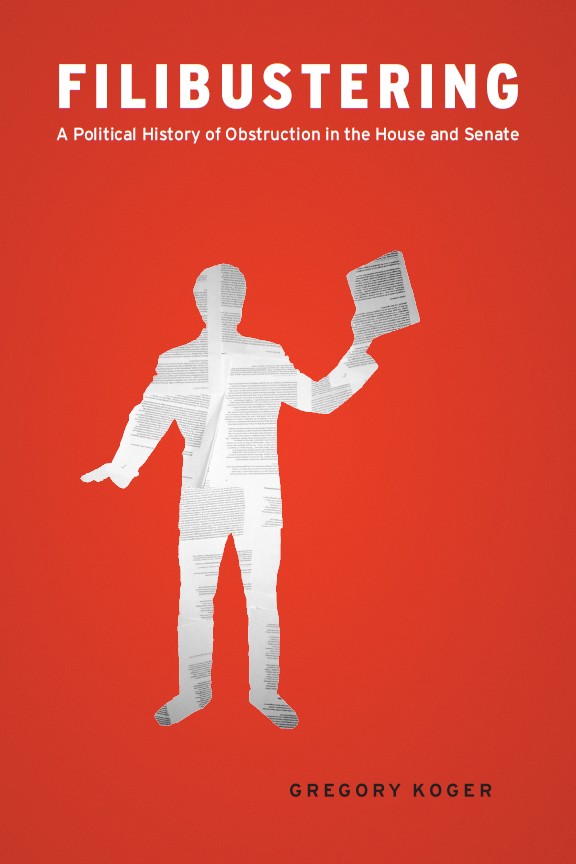Cloth: 978-0-226-44964-7 | Paper: 978-0-226-44965-4 | Electronic: 978-0-226-44966-1
DOI: 10.7208/chicago/9780226449661.001.0001
AVAILABLE FROM
University of Chicago Press (cloth, paper, ebook)Amazon Kindle (PDF)
Apple Books
Barnes & Noble Nook
Chegg Inc
DeGruyter Multi-User Ebook Program
Google Play
Kno
Kobo
ABOUT THIS BOOK
In the modern Congress, one of the highest hurdles for major bills or nominations is gaining the sixty votes necessary to shut off a filibuster in the Senate. But this wasn’t always the case. Both citizens and scholars tend to think of the legislative process as a game played by the rules in which votes are the critical commodity—the side that has the most votes wins. In this comprehensive volume,Gregory Koger shows, on the contrary, that filibustering is a game with slippery rules in which legislators who think fast and try hard can triumph over superior numbers.
Filibustering explains how and why obstruction has been institutionalized in the U.S. Senate over the last fifty years, and how this transformation affects politics and policymaking. Koger also traces the lively history of filibustering in the U.S. House during the nineteenth century and measures the effects of filibustering—bills killed, compromises struck, and new issues raised by obstruction. Unparalleled in the depth of its theory and its combination of historical and political analysis, Filibustering will be the definitive study of its subject for years to come.
AUTHOR BIOGRAPHY
Gregory Koger is assistant professor of political science at the University of Miami. Previously, he worked as a legislative assistant in the U.S. House of Representatives.
REVIEWS
“Filibustering offers an impressive theory of obstruction that undercuts conventional wisdom on the filibuster and provides the most complete analysis of this important topic than has previously been available either in one source or collectively.”
TABLE OF CONTENTS
Illustrations
Preface
I. Foundations
Chapter 1. Introduction
Chapter 2. A Theory of Obstruction
II. The Historic Congress, 1789–1901
Chapter 3. The Escalation of Filibustering, 1789–1901
Chapter 4. Filibusters in the Historic Congress
Chapter 5. Explaining Obstruction in the Historic Congress
III. The Modern Senate, 1901–Present
Chapter 6. The Growth of Filibustering in the senate
Chapter 7. Explaining the Rise of Filibustering in the Senate
Chapter 8. From Attrition to Cloture: Institutionalizing the Filibuster
Chapter 9. The Future of the Senate
Notes
References
Index
